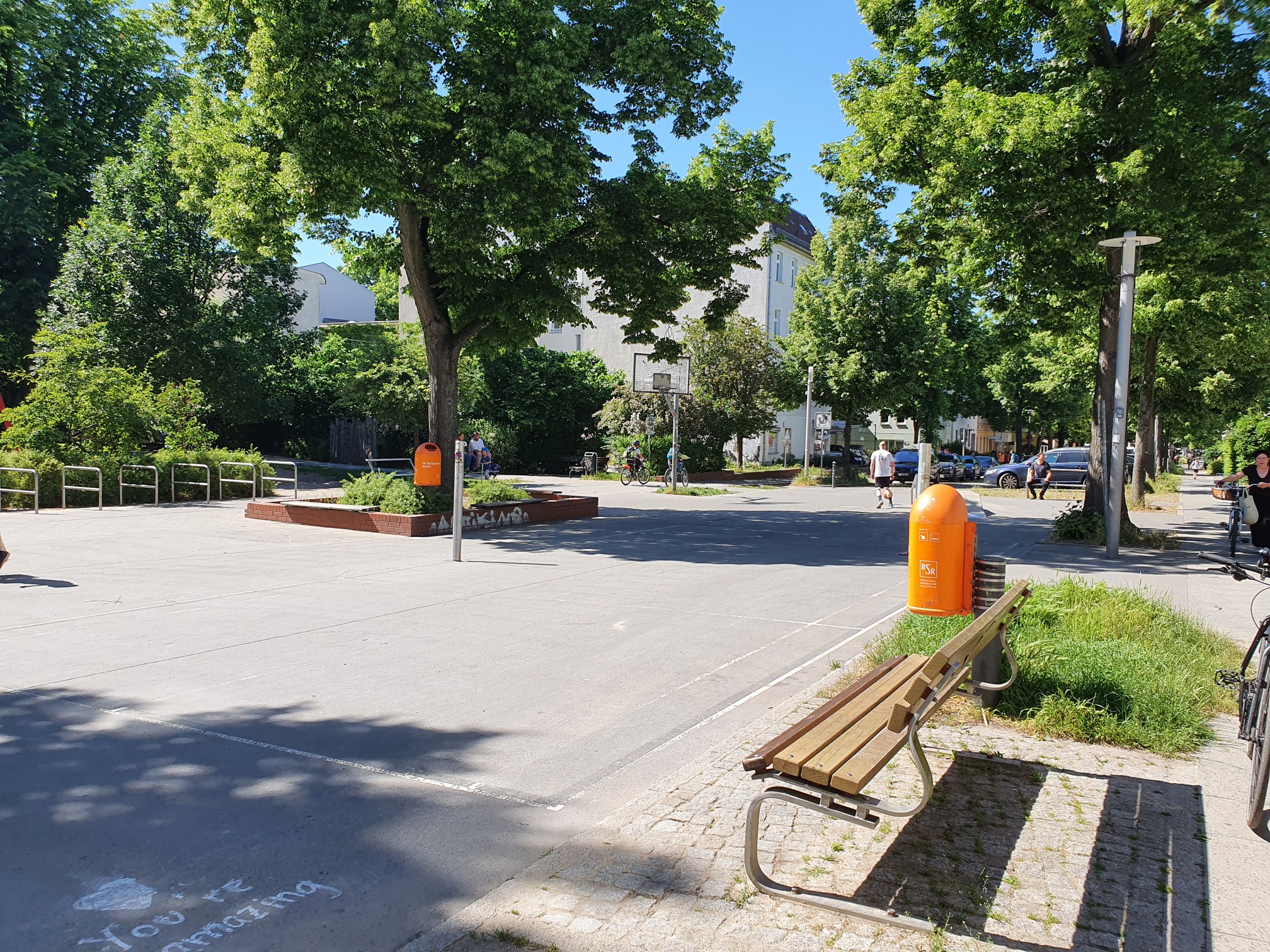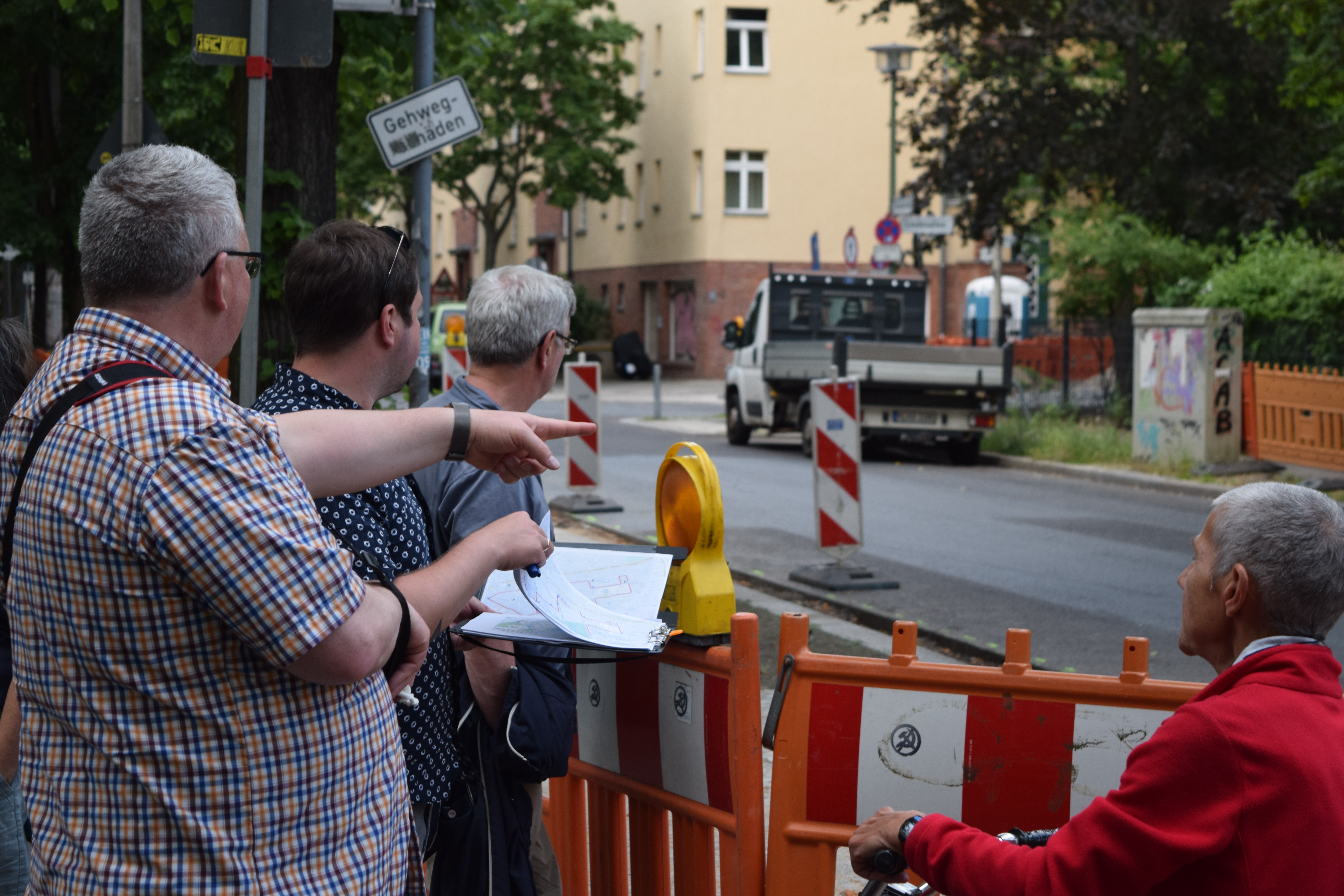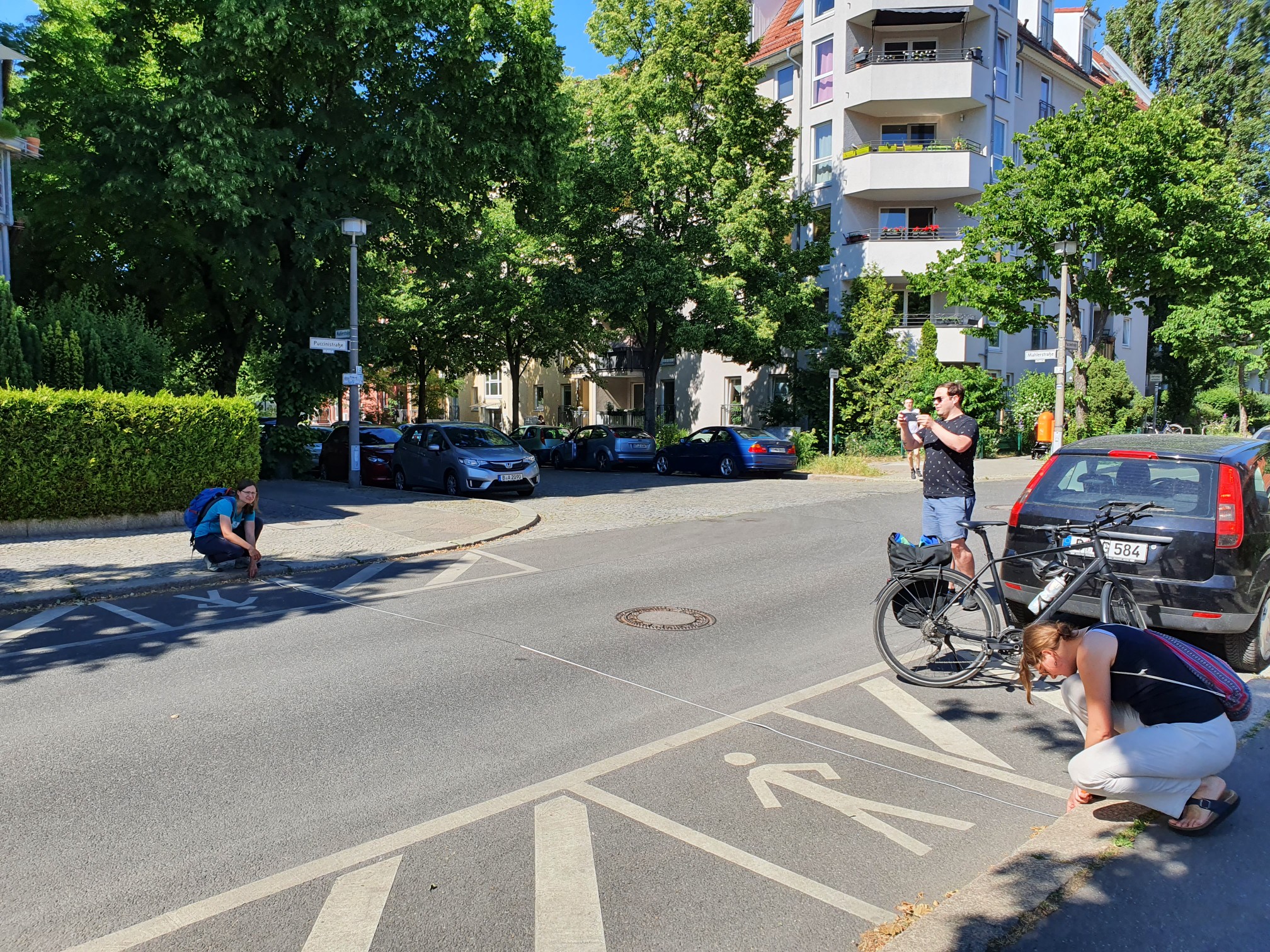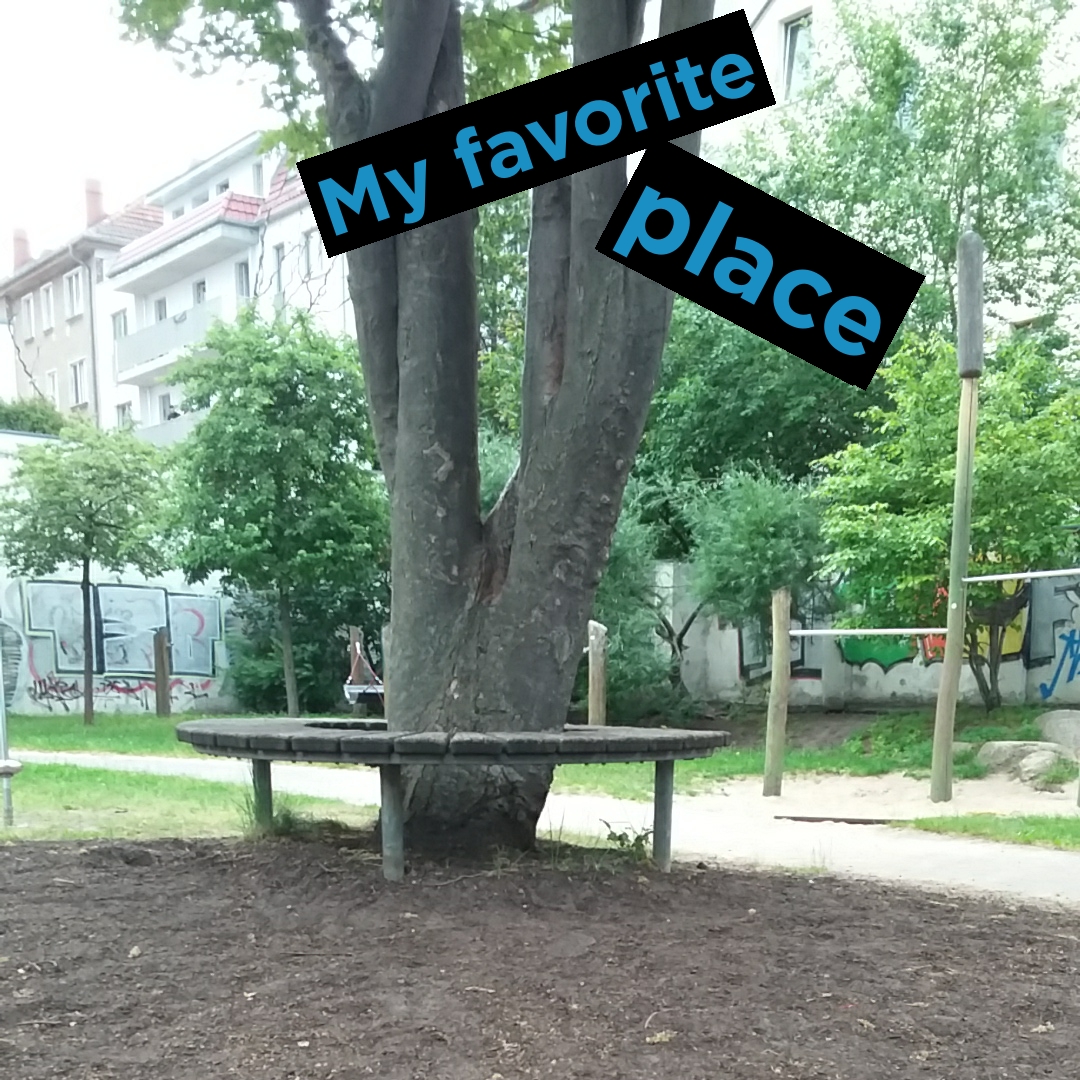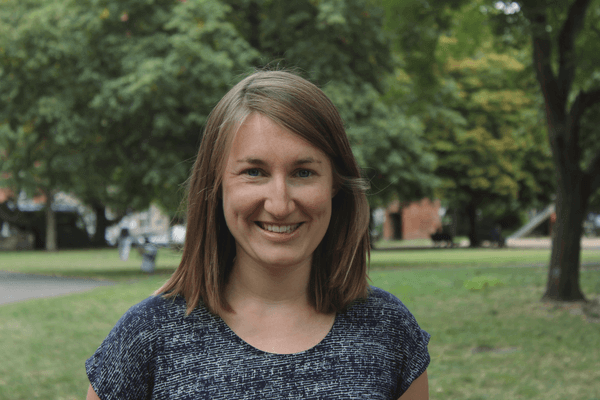City
Berlin
Main actors
Local Government
Project area
Neighborhood or district
Duration
2021 - 2023
This project is based on an innovative approach to city organization, which was first pioneered in Barcelona. It focuses on reshaping traffic management by re-allocating public spaces in a Berlin neighbourhood. This mobility concept limits through traffic on designated streets, prioritizing pedestrians and cyclists, green spaces, and areas for interaction, play, and recreation. Throughout all stages of the project, citizen participation and a shared sense of civic responsibility are actively encouraged.
The Kiezblock initiative draws inspiration from the Superblocks movement in Barcelona which aims to transform local neighborhoods into eco-friendly zones by 2030. Therefore, traffic calming and quality of life raising measures are implemented in the blocks of Barcelona´s grid pattern cityscape. In Berlin, "Kiez" refers to neighbourhoods in the local dialect.
The Kiezblock project was initially proposed of Changing Cities, an initiative that encouraged politicians and residents to suggest ideas for Kiezblocks in the Pankow district. Subsequently, in 2020, the local government approved the implementation of two of the proposed Kiezblocks.
The project commenced in 2021 as a collaborative effort between the district administration, Technical University of Berlin, and Dresden University of Technology.
The primary stages involve:
Additionally, the universities conduct an evaluation and support the local government by informing and participating the residents.
The aim of this project is to reinvigorate the street space of a neighborhood block by redefining it as a mixed-use area that prioritizes cyclists and pedestrians. This provides an opportunity for local citizens to enjoy and make use of the street space in new, sustainable ways.
It is important to note that residents and neighbours are still able to drive their cars within the block, but the street is redesigned to accommodate and encourage alternative modes of transportation. This creates a more inclusive and sustainable environment that benefits the entire community.
Emergency vehicles and delivery traffic can access all buildings within the Kiezblock. However, to ensure the safety of residents and promote a quieter residential environment, traffic-directing measures such as one-way streets or diagonal barriers have been implemented at selected intersections. These measures disallow continuous crossing of the neighborhood as shortcut by motor vehicles in case of traffic jam, and motorized through traffic is rerouted to the designated main roads outside the block.
This strategy not only improves safety, but also makes the streets within the Kiezblock more attractive and timesaving for pedestrians, cyclists, and local public transport. Delivery vehicles also benefit from the traffic-reduced side streets, which results in a smoother and more efficient delivery process.
By reducing automobile traffic within the neighborhood, harmful air and noise emissions are minimized, resulting in a cleaner and quieter environment. In addition to the benefits of reduced traffic, the quality of life for residents is improved through the introduction of new design elements for public spaces.
To encourage community participation and gather ideas for improving the quality of life in the area, a public competition was held. Residents were invited to submit proposals, and a range of innovative ideas were put forward. Among these were the installation of benches for resting, the planting of trees to combat heat islands, and the organization of street fairs to promote community interaction.
These proposals have been carefully considered and will be implemented as part of the Kiezblock Komponistenviertel project.
The implementation process is scheduled for May 2023.
The lead agency for the project is the Pankow district administration with support from Technical University of Berlin and Dresden University of Technology.
The foundation of this project stems from the MobilBericht2 research, which received funding from the Federal Ministry of Education and Research under the Social-Ecological Research funding priority, with grant number 01UR2103. The authors of this publication hold responsibility for its content.
An impact analysis was conducted by Dresden University of Technology regarding changes in traffic and mobility behavior of the people in November 2023. The evaluation report is available.
The main barriers faced by the project included challenging administrative procedures, primarily stemming from traffic-calming measures not specified in German Transport law, a shortage of personnel, and a conservative public administration culture resistant to innovative ideas. These factors led to multiple delays in the project timeline.
It is anticipated that residents will primarily benefit from the implemented measures, so significant opposition has not yet emerged. While some individuals have expressed concerns and perceived drawbacks, there has been no organized resistance hindering the implementation process.
Schwedes, Oliver; Hausigke, Sven; Buchmann, Lisa (2021): Verkehrskonzept: Superblocks für Berlin. LINK
Hausigke, Sven; Buchmann, Lisa (2023): Kiezblocks – Mehr als nur Verkehrsberuhigung. Nachhaltige Mobilität bedeutet auch partizipative Gestaltung des öffentlichen Raums. PLANERIN 2/23 "City ReUse – Die Wiederverwendung der Stadt", S. 52-54.
External links / documents
On Map
The Map will be displayed after accepting cookie policy

